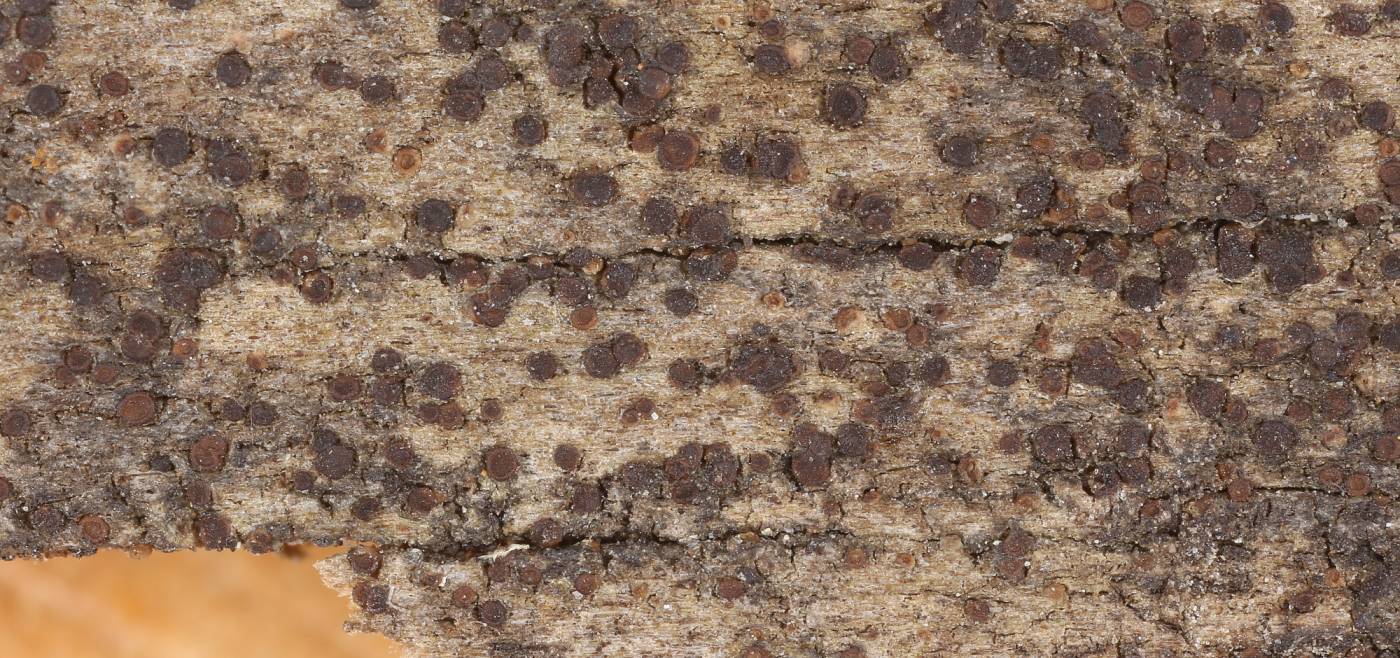A crustose lichen, resembling a bit the subtle members from the Bryobilimbia genus or other lichens with lecideoid fruiting bodies. Its apothecia are dark (red-brown to brown-black), but not carbonised. If wet, they sometimes get jelly-like with an elevated margin. Therefore, the species may resemble gyalectoid lichens (e.g. the genus Gyalidea). The relatively short, widely ellipsoid, two-celled ascospores with thick walls, sometimes slightly constricted in the middle and composed of cells of various sizes, are characteristic.
Catinaria atropurpurea occurs on both smooth and hard, often weathered bark mainly of deciduous trees, sometimes also on dying or already dead ones. Often, it may be found on wood of any hardness and at any stages of decomposition, such as surviving tree snags and lying wood. Its usual habitat are well-preserved old-growth forests rich in old, slowly dying trees and dead wood. However, the lichen may be found also in avenues or old managed forests. The species is relatively rare in the Czech Republic, growing mainly in well-preserved natural forests in mountains and mountain foothills. A similar pattern may be observed also at European scale. It seems to be more common only in the western part of the continent.
taxonomic classification:Ascomycota → Lecanoromycetes → Lecanorales → Ramalinaceae → Catinaria
Red List (Liška & Palice 2010):EN – endangered
Occurrence in the Czech Republic
All records: 57, confirmed 57. One click on a selected square displays particular record(s), including their source(s).
